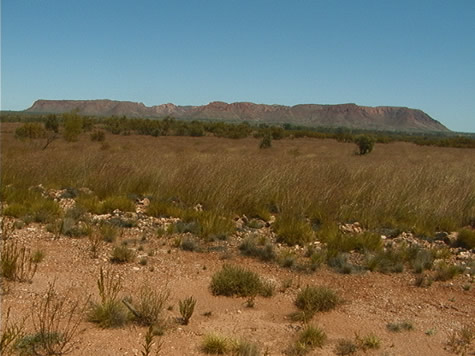Geography – day 55
While biking on the road from Hermannsburg we explored an incredible feature in the landscape: Gosse Bluff; a 5km wide crater thought to have been formed by the impact of comet slamming into the earth’s surface around 140 million years ago.

The shallow depth of the blast lends weight to the theory of either a comet, or a low-density asteroid and not a solid rock meteorite. However, no trace of a comet or asteroid was been found in the area, and it is presumed to have vapourised.
The blast has been calculated to have been about one million times more powerful than the Hiroshima bomb. It would have destroyed most life forms within a distance of hundreds of kilometres and sent huge plumes of fine debris into the atmosphere, affecting weather patterns worldwide for some years. This would certainly have made for a very challenging environment for plant and animals species seeking to recolonise the surrounding area after the event.
During the blast, fragments of rock, included blocks up to a hundred metres long, were hurled into the air and then fell back to the ground.
The comet would have consisted of a frozen ball of carbon dioxide, ice and dust. Late Proterozoic-Cambrian Rock, 500-800 years old and comprising sandstone, siltstone, shale and limestone, would have been blasted to the surface from more than 6km down. Using satellite imagery we can estimate the original outer crater being up to 20km in diameter. A long period of erosion and wet climate has have since removed this almost entirely, leaving the inner crater of 5km that we see today (see photo).
There is a close parallel with craters that can be found on the surface of the moon and Mars. Similarities are the breaking up and bending of rock layers with in a roughly circular area, a crater, uplifted rock in the centre, shatter cones, melted rock fragments, and minerals that are formed only at extreme pressures.
Suggested learning activities: look at how volcanoes are formed and explore the differences and/or similarities to the impact of extra-terrestrial bodies into the earth’s surface (like at Gosse Bluff).